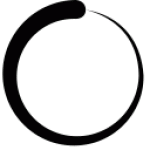Macadamia
Description
Uses
Propagation
References
Common Pests and Diseases
Diseases
Category : Fungal
Anthracnose Colletotrichum gloeosporioides
Symptoms
Black lesions on leaves and fruit; soft black lesions on husks of nuts followed by decay of nuts on the ground; senescent mature nuts may remain attached to the tree; shells of infected husks may turn brown-gray in color but the kernel inside remains unaffected
Cause
Fungus
Comments
Disease emergence favors high humidity; fungus survives on plant debris; spores are spread by splashing water
Management
Avoid stressing trees by providing them with adequate irrigation and fertilization; prune out dead or dying limbs from tree canopy to reduce levels of disease inoculum; control insect pests to prevent stress to treesHusk spot Pseudocercospora macadamiae
Symptoms
Initial symptoms of the disease are chlorotic to yellow flecks on the husks which enlarge and develop tan brown centers; lesions coalesce and develop diffuse bright yellow halos; lesions may be covered in powdery gray spore masses during periods of wet weather; lesions mature into tough, woody spots; circular tan spots may develop inside the husk but shells and kernels remain unaffected
Cause
Fungus
Comments
Yield losses may result in susceptible varieties due to nuts dropping from tree prematurely; spores are spread by water splash from infected husks; diseased husks may produce spores for up to 2 years following infection
Management
If variety of macadamia being grown is susceptible to the disease then an appropriate protective fungicide should be applied to the fruits when they are approximately the size of a match head; remove and old and diseased husks from the tree to reduce inoculum levelsRaceme blight Botrytis cinerea
Symptoms
Small brown spots on flower petals which spread to racemes (flower stalks); infection may affect small flower buds, florets and rachis; racemes turning black and dying; entire raceme may become blighted within a few days; necrotic flowers remain on tree and become covered in fuzzy gray fungal growth
Cause
Fungus
Comments
Disease emergence favors wet weather and cool temperatures
Management
Fungicide application is not usually warranted unless infection occurs during wet weather which can cause severe infections
Slow and quick tree decline
Xylaria arbuscula
Phellinus gilvus
Acremonium recifei
Nectria rugulosa
Symptoms
Yellowing or browning of some leaves in the tree canopy; subtle change in color of tree canopy from dark to light green; entire tree turning brown; in final stages of disease, whole tree is brown and distinct from green trees around it; tree death may occur in a few months after initial symptoms have appeared
Cause
FungI
Comments
Management
Remove any dead or diseased trees from the orchard; avoid wounding tree trunksCategory : Oomycete
Phytophthora trunk and stem canker Phytophthora cinnamomi
Symptoms
Nursery trees and young plantations trees are stunted and chlorotic and may be partially defoliated; if lesions girdle the stem then the tree will die; in mature trees, dark discoloration of wood is visible by removing the bark from the trunk of the tree; dark cankers may extend from trunk at soil line to the lower branches of the tree
Cause
Oomycete
Comments
Fungus survives in plant debris in soil; spread by water splash
Management
Plant only disease-free nursery stock; plant trees in well-draining soils on a slight mound to promote drainage and prevent water-logging; avoid wounds to the trunk of the tree which allow fungi to enter; incorporate organic matter into the soil around the tree; apply appropriate protective fungicides to tree trunks prior to wet season;Category : Other
Rats
Rattus rattus
Rattus norvegicus
Rattus fuscipes
Symptoms
Extensive loss and damage of developing nuts or nuts that have dropped from tree; nuts have holes approximately 1 cm in diameter gnawed through shell to gain access to kernels
Cause
Rodents
Comments
Encourage predatory birds such as owls by providing nesting boxes in the trees
Management
All food sources for rats should be removed from the orchard, this includes old nuts, nut waste and wild tobacco; remove any rat nests from trees; keep grass around trees mown short and, if possible, maintain a clear mown area around the orchard to deter rats from entering and to aid predators such as owls in detecting and hunting ratsPests
Category : Insects
Macadamia nut borer Cryptophlebia ombrodelta
Symptoms
Entry holes in husks of nuts, usually close to the panicle; holes usually have insect frass protruding from them and husks may have shallow, dimple-like depressions; infested nuts drop from tree prematurely; insect eggs are scale-like and are laid on the surfaces of green husks; larvae are legless grubs which are pinkish in color when mature with dark green spots; adult insect is a red-brown moth
Cause
Insect
Comments
Larvae pupate in damaged nuts; entire lifecycle of the moth is completed in approximately 5 weeks
Management
Control of macadamia nut borer can be difficult as insecticides are ineffective once the larvae have entered the nuts; appropriate insecticides should be applied if gren fallen nuts exhibit damage or live, unparasitized eggs are present on the tre; old nuts should be removed from tree and the orchard ground at harvestTropical nut borer Hypothenemus obscurus
Symptoms
Numerous round holes approximately 0.5 mm in diameter on husks; extensive tunnelling through husk and shell visible when nut is cut open; in late stage infestations the entire kernel may be consumed
Cause
Insect
Comments
Economic damage is usually incurred if the nuts remain on the ground for a period of three weeks or more before harvest










